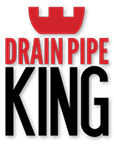Pipe blockages and who to call: A plumber or the Council?
Sewerage or storm water pipe problems may occur on either your side of the property or on the Council’s side. It is ideal to call a plumber before calling the Council, as they will only ask if you have already called a plumber to check if there is sewage backed up at the sewer shaft. Looking for backed up sewer in the shaft will help the plumber determine where the blockage is and whose responsibility it is to clear it.
How a plumber will determine whose side the blockage is on
When a plumber is called to investigate a blocked drain, the first thing they will check is the Council sewer shaft riser inspection opening (IO). This is usually located at the lower corner of the property, about 1 metre in from the boundary. It has either a white or black cap and is surrounded by concrete which is about the size of an ice cream container. The sewer shaft riser is the point where the Council is no longer accountable; the owner takes responsibility from the riser up towards their property. Pipes all fall on a downward slope towards the Council side, as pictured below:
The plumber will unscrew the top of the IO and inspect the sewer shaft to see if it’s blocked (if it’s blocked, the water level will be quite high). If this is the case, it’s generally safe to assume the blockage is on the Council side of the line and they will need to be contacted to clear it. It is illegal for a plumber to clear a blockage on the Council side of the line; the plumber will know that they are not to conduct this work. If a blockage is on the Council side, they will clear it for free, as it is their responsibility.
Your responsibilities as the homeowner
An issue which seems to arise from blocked drains is the location of the sewer shaft IO. It is the homeowner’s responsibility to keep it visible and accessible at all times. There have been many cases where people don’t realise what an IO is and cover it up with landscaping or even concrete. If a plumber needs to use specialised equipment to find the IO, you may be charged for this. Therefore it is advisable to know where your IO is located and easy access to make your plumber’s job quicker and easier.
If the blockage is on your side
If there is a blockage on your side of the property, your plumber will need to put a camera down the line and locate it. Their first preference for an access point will be through an inspection opening (IO), gully or vent outside the house, as this task can be a little messy. A gully is a grated drain located outside the bathroom or kitchen (also known as an overflow relief gully).
If these are not options, they will enter the pipework via the toilet or another drain such as a bathroom floor grate, inside the house. This will all depend on the ease of access for the plumber and their range of equipment. They should have varying different sizes of drain cameras and high pressure water jetters to suit different circumstances.

